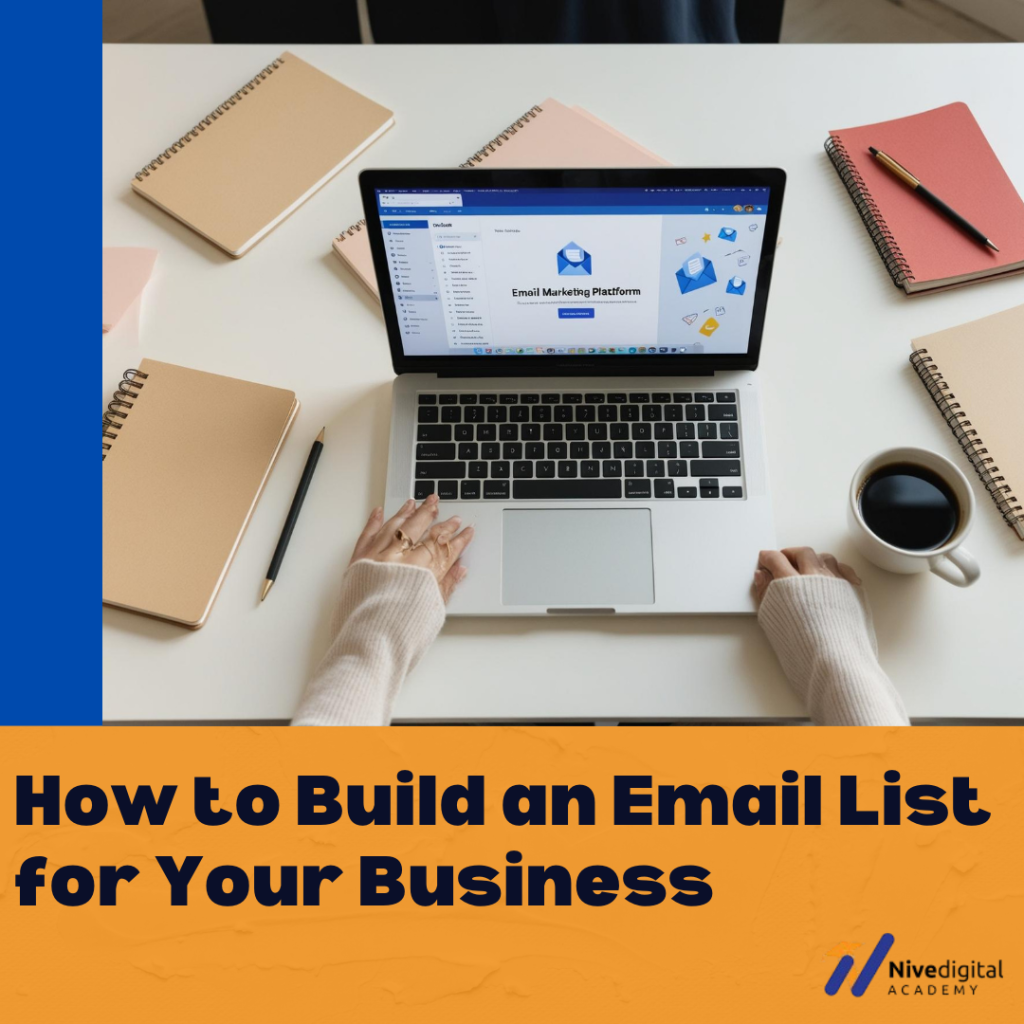
An email list is one of the most valuable assets for any business. It allows you to communicate directly with potential and existing customers, nurture relationships, and drive consistent revenue. Unlike social media platforms, where algorithms control your reach, an email list gives you full control over how and when you engage with your audience. This guide will walk you through everything you need to know about building and managing an effective email list from scratch.
Why an Email List is Important
Building an email list offers several advantages that can help grow your business:
- Direct Access to Customers: Email reaches people right in their inbox, making it more personal than social media.
- Higher Engagement Rates: Email marketing often has better open and click-through rates than social media posts.
- Cost-Effective Marketing: Sending emails is relatively inexpensive compared to other marketing strategies.
- Increased Sales and Conversions: Personalized emails can lead to higher conversions by addressing customer needs directly.
- Ownership and Control: Unlike social media, where your account could get restricted, you own your email list and control your messaging.
Step-by-Step Guide to Building an Email List
1. Choose an Email Marketing Platform
Before collecting emails, you need an email marketing tool to manage your subscribers, send emails, and analyze performance. Popular options include:
- Mailchimp (Beginner-friendly with free plans)
- ConvertKit (Ideal for content creators)
- ActiveCampaign (Advanced automation features)
- Brevo (formerly Sendinblue) (Affordable and feature-rich)
- GetResponse (Good for automation and segmentation)
2. Create a Signup Form
To start collecting emails, you need a well-designed signup form on your website. A good form should include:
- A Clear Headline: Example – “Join Our Community & Get Exclusive Deals!”
- Minimal Fields: Ask for only essential details (name and email) to reduce friction.
- A Strong Call-to-Action (CTA): Example – “Subscribe Now” or “Get Started.”
Place signup forms in strategic locations, such as:
- Homepage
- Blog pages
- Sidebar
- Footer
- About page
3. Offer an Irresistible Incentive
People are more likely to share their email if they receive something valuable in return. Consider offering:
- Discounts: “Sign up and get 10% off your first purchase.”
- Free eBooks or Guides: Share useful industry insights.
- Exclusive Content: Early access to sales, special updates, or insider tips.
- Free Webinars or Courses: Educate your audience while growing your list.
4. Use Pop-ups and Slide-ins Smartly
Pop-ups can boost signups if used correctly. Follow these best practices:
- Trigger pop-ups based on user behavior, such as exit intent (when someone is about to leave your site).
- Make closing easy to avoid annoying visitors.
- Keep the message clear and engaging to encourage signups.
5. Leverage Checkout Forms for E-commerce
If you run an online store, allow customers to opt-in to your emails at checkout. A simple checkbox like “Get exclusive deals and product updates” can help grow your list.
6. Promote Your Email List on Social Media
Your social media platforms are great places to promote your email list. Here’s how:
- Facebook & Instagram: Use posts, stories, and bio links to direct followers to your signup page.
- Twitter/X: Pin a tweet with your signup link.
- LinkedIn: Share valuable insights and encourage people to subscribe.
- YouTube: Mention your email list in videos and add signup links in descriptions.
7. Run Contests and Giveaways
Contests are an excellent way to encourage email signups. Example: “Win a Free Product! Enter Your Email to Participate.” Be sure to follow up with relevant content after the contest ends to keep subscribers engaged.
8. Implement a Referral Program
Encourage your existing subscribers to invite friends by offering small rewards like:
- Discounts
- Exclusive content
- Freebies
Example: “Refer a Friend and Get 20% Off Your Next Order.”
9. Collect Emails Offline
If you have a physical store or attend networking events, collect emails using:
- A tablet with a digital signup form.
- A printed signup sheet.
- Business card exchanges with an email invitation to subscribe.
10. Personalize Your Email Campaigns
Once you’ve built your list, keep your subscribers engaged by sending personalized emails, such as:
- Welcome Emails: Immediately thank new subscribers.
- Exclusive Offers: Discounts or promotions based on purchase history.
- Valuable Content: Industry news, tips, or educational materials.
Best Practices for Managing Your Email List
- Send Relevant Content: Keep your emails useful and engaging.
- Avoid Overwhelming Subscribers: Don’t send too many emails in a short period.
- Make Unsubscribing Easy: Respect user preferences.
- Segment Your List: Group subscribers based on interests for more targeted emails.
- Test and Optimize: Experiment with subject lines, email designs, and send times.
Conclusion
Building an email list takes time and effort, but it’s one of the most valuable marketing strategies. Focus on providing value, making signups easy, and keeping subscribers engaged. Over time, a strong email list will drive sales, improve customer loyalty, and give you direct control over your marketing efforts.
Frequently Asked Questions (FAQs)
1. How often should I send emails?
Sending 1-2 emails per week is a good rule of thumb. Test different frequencies and monitor engagement to find the best balance.
2. How can I prevent my emails from going to spam?
- Use a professional email marketing service.
- Avoid spammy words like “free money” or “click here now.”
- Ask subscribers to whitelist your email address.
- Ensure your emails provide real value.
3. What’s the best way to attract quality subscribers?
Focus on providing value through:
- Targeted incentives.
- High-quality content.
- Promotions in relevant online communities.
4. Can I buy an email list?
No. Buying lists can harm your sender reputation, reduce engagement, and violate data protection laws. Always grow your list organically.

Article by:
Oyejobi Adeola, founder of NiveDigital & NiveDigital Academy, is a top expert in SEO and digital marketing.
With over a decade of experience, he has helped businesses grow through advanced SEO strategies and trained hundreds of students to succeed online.
His insights have been featured in top industry publications.

